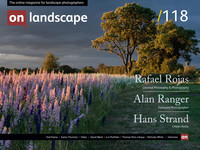Modern mans presence in the high north

Hans Strand
Hans Strand is an internationally recognised photographer who has received numerous awards for his work and published three books. He lives near Stockholm in Sweden.
Not very many think of the Arctic as an urban landscape. However, with modern mans presence in the high north, parts of the wild landscape has undergone some serious changes. The original inuits did not reshape the land in any significant way, but with the industrialisation of the Arctic, small urban societies started popping up. Inuit villages formed around the fishing industry, and people from colonising countries came here to work in coal mines and oil plants. These congregations of people have resulted in quite bizarre collisions between modern society and Arctic wilderness. Sometimes as environmental disasters and sometimes even as interesting places for street photography.
The Urban landscapes of the Arctic are very different from what we are used to in the rest of the world. Plumbing pipes and electric cables are above ground since there is hardly any soil to put it in and if there was, it is frozen and would cause the water inside to freeze. Boats, old cars & motorcycles, dogs & dogs sleds, garbage and drying laundry, are familiar sights of the back yards of the typical Inuit homes. The homes are painted in vivid colours you have never seen on houses before. All together this materialises in colourful chaos and from a photography point of view, just as interesting as the nearby wilderness itself. The town Ilulissat on the west coast, is a typical fishing industry town with 4500 inhabitants, mainly living from fishing and tourism.
On Svalbard, the Russian coal mine Pyramiden was closed down in 1998. People working there left almost overnight. Now the place has turned into a ghost town, a reminiscence of the times of the communist plan economy. It is a similar story with Barentsburg, which still is in operation but more or less on idle. These mines were never financially successful. They were in use just to justify the Societ presence on Svalbard. Today, most of the industrial buildings, machinery and homes are disintegrating, rusting and decaying in the harsh Arctic climate. I also have a strong feeling that there are lots of leftovers of poisonous chemicals and heavy metals left in rusty pipes and barrels and completely out of control.

